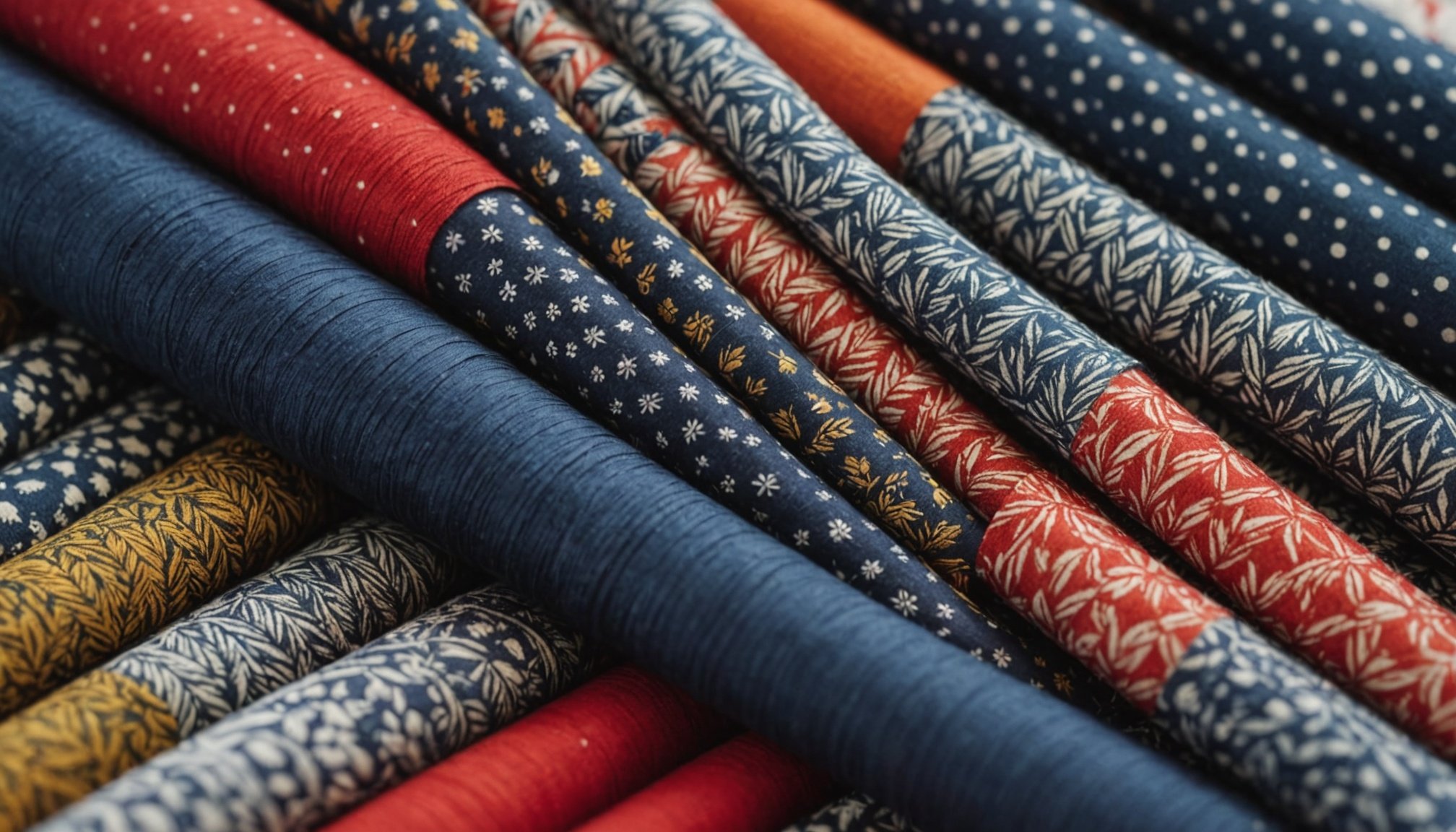Understanding UK Weather and Its Impact on Fabric Choice
Navigating the UK’s diverse climate can be an art in itself when it comes to fabric selection. The UK’s weather is famously unpredictable, with frequent shifts between rain, sun, and everything in between. This variance demands fabrics that can adapt to fluctuating conditions, ensuring comfort and practicality throughout the year.
In the UK, seasonal changes play a significant role in fashion choices. During the chilly winter months, fabrics like wool and velvet are favored for their warmth and ability to trap heat. Conversely, summer invites lightweight options such as cotton and linen, which offer breathability and moisture-wicking properties—a crucial feature during unexpected rain showers.
In parallel : Mastering the Pencil Dress: Tips for Achieving a Chic Professional Look in Manchester
Moreover, how weather influences fashion trends cannot be underestimated. Designers often incorporate weather-resilient materials into their collections, responding to an ever-changing climate. When selecting attire, considering weather forecasts and expected conditions can significantly impact one’s comfort and style. This forward-thinking approach results in durable, versatile wardrobes that seamlessly transition from wet to dry, hot to cold.
Ultimately, understanding the UK weather patterns enables individuals to make informed decisions about their fabric selection, enhancing both functionality and fashion.
Also read : Ultimate Guide to Rocking a Swing Dress at UK Music Festivals: Style Tips and Tricks
Suitable Fabrics for Seasonal DIY Projects
Choosing the right seasonal fabrics is essential for successful DIY projects. Fabrics vary greatly between seasons, each responding to different climates and trends.
Summer Fabrics
In summer, breathable materials are vital. Cotton, linen, and rayon are ideal choices, offering comfort in warm weather. Cotton, known for its softness, allows air to circulate, keeping you cool. Linen wicks moisture effectively, which is perfect for those humid days. Rayon mimics silk but is more suitable for summer due to its lightweight nature. When selecting fabrics, look for those that are lightweight and moisture-wicking to ensure maximum comfort.
Autumn Fabrics
As temperatures cool, layering becomes crucial. Wool blends and heavier cottons create versatile layers suitable for fluctuating autumn weather. Wool is warm and breathable, making it an excellent option for sweaters or coats. Experiment with colors and textures that capture the essence of autumn, such as earth tones and warm hues.
Winter Fabrics
Winter demands fabrics with excellent insulation. Fleece, wool, and down alternatives provide much-needed warmth. Fleece is soft and provides good heat retention. Wool is a classic, offering both warmth and breathability. Consider durability and water resistance to cope with winter conditions.
Spring Fabrics
Transitioning to spring involves embracing light layers again. Light knits paired with cotton blends work well, offering flexibility for changeable temperatures. Floral patterns and bright colors can add a cheerful vibe, celebrating spring’s renewal.
Sourcing Fabrics in the UK
Navigating the realm of UK fabric sourcing offers a rich tapestry of options, catering to various needs and preferences. Starting with popular fabric stores, those opting for a physical shopping experience can explore renowned establishments such as Liberty London and Shaukat Fabrics. For those venturing online, retailers like Fabrics Galore and Minerva offer extensive collections, accessible from the comfort of your home.
To uncover hidden gems, consider exploring local markets and specialty shops, which often boast unique selections and bespoke offerings. Borough Market in London and market stalls in Manchester’s Northern Quarter are great starting points for discovering rare fabrics that may not be available at larger retailers.
When selecting fabrics, it’s crucial to pay attention to provenance and sustainability. While it may seem secondary to cost or design, choosing materials with a clear, ethical supply chain supports sustainable practices and reduces environmental impact. Fabrics that carry certifications like OEKO-TEX or GOTS provide assurances of environmentally friendly production processes.
In conclusion, UK fabric sourcing involves balancing choices between convenience, uniqueness, and ethical considerations, empowering you to make thoughtful and informed decisions about your craft projects.
Understanding Fabric Characteristics and Garment Functionality
Delving into fabric characteristics is crucial to appreciating how they affect garment functionality. Key properties such as stretch, breathability, and weight play significant roles in determining a garment’s performance.
Firstly, fabric stretch influences how a garment fits and allows movement. Materials such as elastane or spandex enhance flexibility, making them ideal for activewear or clothing designed for extended wear. Stretchy fabrics adapt to the body’s contours, offering comfort without restricting movement.
Breathability, another essential feature, dictates how well a garment can regulate temperature. Fabrics like cotton and linen naturally allow air circulation and wick moisture away, making them superior choices for warm climates or physically demanding activities. In contrast, synthetic materials may limit breathability unless specially treated.
Finally, fabric weight impacts a garment’s comfort and wearability. Light-weight fabrics are perfect for summer attire, aiding in keeping cool, while heavier fabrics provide warmth, suitable for winter wardrobes.
To optimise garment functionality, match fabric characteristics with the intended garment purpose. For instance, select light and breathable materials for sportswear or outdoor apparel. For formal attire, choose fabrics with a moderate weight and stretch. Understanding these properties and their implications can significantly enhance comfort and style.
DIY Fashion Project Ideas Aligned with Seasonal Fabrics
Embarking on DIY fashion projects connected to seasonal fabrics can transform your wardrobe and home while satisfying your creative urges.
Seasonal Apparel
Each season offers unique opportunities for incorporating trending designs into DIY apparel projects. For spring, consider lightweight fabrics like cotton or linen to create flowing skirts or blouses. Summer calls for breezy sundresses with breathable materials, while autumn is perfect for cozy wool sweaters. Winter welcomes the warmth of thick fabrics like fleece for layering.
Customizing garments enhances style and comfort. To do so, add elastic waistbands for adjustability, or incorporate trending colours and patterns with fabric dye or paint. This personalization can set your projects apart and ensure a comfortable fit tailored to your preferences.
Accessory Projects
Creating accessories such as scarves, hats, and bags can complement main garments and highlight individual style. Use seasonal fabrics to craft items perfect for the weather: soft knits for winter hats or vibrant cottons for summer bags. Upcycling leftover materials from larger projects can inspire unique and sustainable accessories, contributing to a waste-free approach to fashion.
Home Décor Projects
Fabric remnants serve not only fashion but home décor too. Transform leftover material into cushions, curtains, or table settings that reflect seasonal themes. The right fabric choice balances durability and aesthetic appeal, ensuring completed projects brighten your home while withstanding everyday use.










